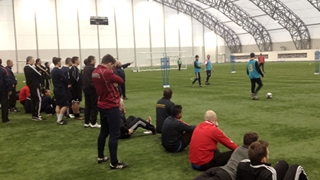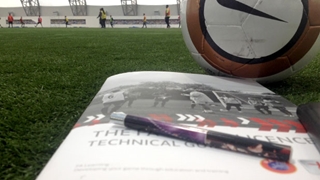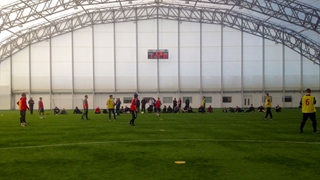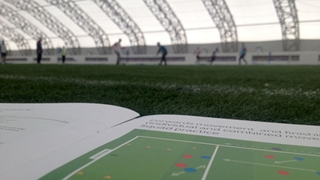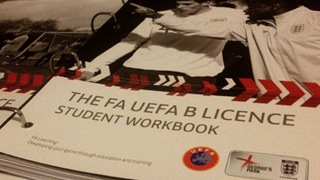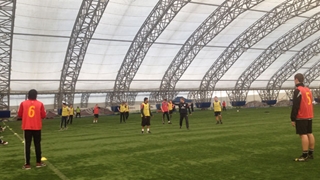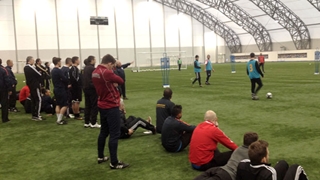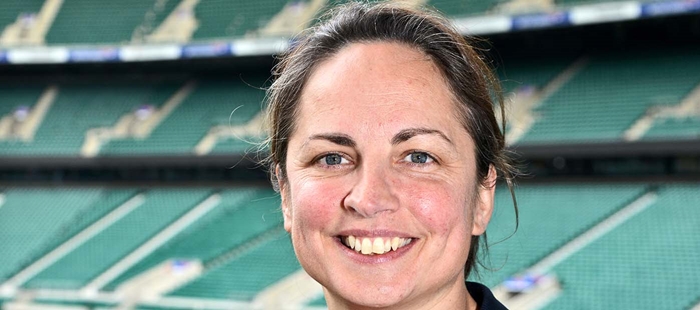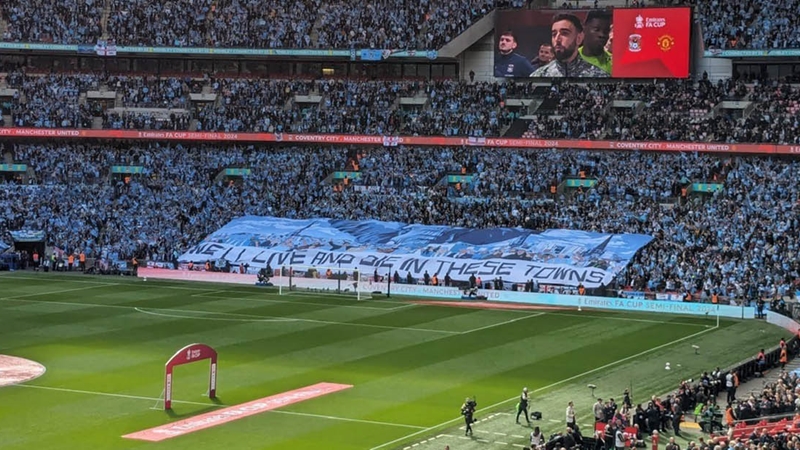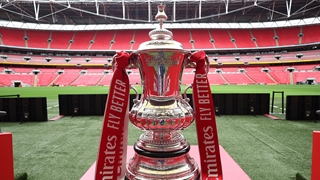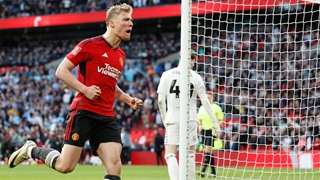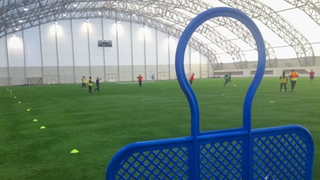
FA Editor Jamie Bradbury take his latest step along the coaching pathway by working towards the UEFA B coaching licence.
Day ten was focused on the role of the goalkeeper as an England national team coach came to town...
Since our very first morning on the course I had been looking forward to day ten when we were told that Martin Thomas would be taking the goalkeeping module.
I've always been intrigued by the evolving role of the keeper in the game, but was also pleased to see Martin – the England Under-21s goalkeeper coach – who I had known for a long time and had spent countless trips away with him as part of the Three Lions set-up.
Down the years I've watched many of Thommo's sessions close-up as he's coached some star stoppers; Joe Hart, Paul Robinson, David James, Jack Butland, Scott Carson, the list goes on and on.
As an ex-League and international keeper himself, he's regaled us with many a story, too. But to see him in this environment was a first and, as we chatted at the start of the day, he asked me to note the difference between how I'd seen him coach before and how he would coach us, as coaches.
Getting the morning started, he introduced himself to the group at the London Soccerdome and outlined his plan for the next few hours; an unopposed practice on dealing with crosses, progressing into opposed then a function, a small-sided game and a phase of play on playing out from the back.
One of his key messages before we headed out to the pitches was one I'd heard him say before, but highlights how the goalkeeper should be viewed by coaches nowadays; the keeper is a part of the team, not apart from the team.
Yes, you often see them warming up separately from the outfield players, but when there is serious coaching going on it is vital that the keeper is included, whether as a shot-stopper in an attacking practice, as a member of the defensive unit protecting their territory or starting an attack.
People often say 'so and so is a great shot-stopper', but surely that is a pre-requisite of a keeper? They also need to be comfortable on the ball, a good communicator, be quick-thinking and have good distribution with both feet and hands, as well as many other attributes. So as Martin says, they really are now a part of the team.
The practical part of the day began with a warm-up on the 3G. All candidates were involved as we carried out some basic goalkeeping techniques; throwing, catching, moving around on the balls of our feet. It then progressed on to a footwork and handling practice, working on stance, getting in line with the ball and diving in the correct fashion.
Have a look at this goalkeeping video masterclass from Martin's FA colleague Simon Smith which addresses some of those basics...
Goalkeeping Basics with Simon Smith
After we had looked at the fundamentals of goalkeeping, Martin then moved onto the next part of the morning. His first practice was dealing with crosses unopposed and he highlighted some key messages as three players delivered balls in from wide areas.
Martin talked about the goalkeeper adopting the right starting position to defend the goal and the space around, which may vary slightly from keeper to keeper depending on stature and conditions, and to make themselves a big and imposing figure.
He then introduced defenders and forwards to work as a defensive unit and took those principles forward into a neat little 4v4 small-sided game, which I've drawn up using The FA Coach's App. You can download the practice pdf here.
Martin's final practice of the morning was a Phase of Play - 'playing out from the back'. We'd seen a similar practice earlier on the course, but this one had the goalkeeper at the heart.
The communication of the goalkeeper is paramount, while the understanding of the rest of the team to certain triggers and how the team in possession would play from defence is also important.
I was given the role of the target man up front, and while the practice began by looking at the keeper playing short to his centre-backs, through the central midfielder and through the full-backs, we eventually progressed to the long pass forward.
The pressure on me was to get in the right position when the goalkeeper had no options short. He would fire the ball up towards me to bring down and play in the attacking midfielder who was marauding forward.
Without going into the details of whether my technical ability was up to the required level, the point is that we worked on three or four different options for a keeper to play out.
Depending on how the practice, or a game for that matter, panned out, the team in possession would know what route out would be the most appropriate and identify the triggers to take up the right positions.
I've also drawn up the Phase of Play practice on the Coach's App. Download the pdf here.
That wrapped up the goalkeeping element so we returned to the classroom and looked at Long Term Player Development, creating different practices to produce different outcomes and the subject of drug awareness from the course workbook.
Finally, before our departure, we were handed our topics for our 45-minute sessions, which we'll each have to deliver over days 11 to 14. Mine was an interesting one: Coach a team to switch play to advantage.
We were given a few final pointers about planning the sessions, which I think are probably useful for most coaches:
- Keep it simple
- Understand the topic and technical points
- Coach only what you see
- Create opportunities to coach the topic by manipulating the practice
- Utilise free-play to determine players' understanding of the topic
- Don't always start at the same position
- Ensure practice is relevant, realistic and repetitive
- Use demos to show what you want, walk through it, then go live
And that was it for a packed day ten - the final day of the learning programme. Ahead of us now are four days of student sessions stretched over the next few months - I'll be coaching my topic on one of those days.
I've then got to make sure my course portfolio is up to date and the sessions back at my club are delivered, and after all that, hopefully I'll be ready for the final assessment.
The journey continues...
Keep checking TheFA.com for more from the UEFA B course. If you have any questions you can follow Jamie on Twitter @jamiebradbury.
To find out more about local coaching courses, visit your County FA website, or for national courses click here.
www.footballcommunion.com




